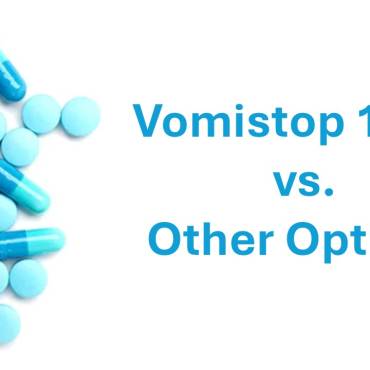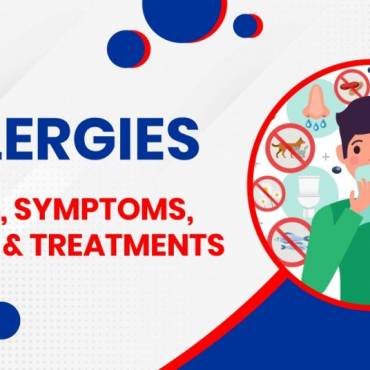One of the most important steps in the diagnosis of food allergy is obtaining a careful medical history. Standard skin and blood tests are performed to detect a certain type of allergies.
Food allergy affects up to 6 to 8% of children under three years of age, and around 4% adults have a food allergy. Studies revealed that among food allergy, allergy to peanut is on the top. Large numbers of people are becoming aware of food allergy, and the topic has become a public concern. This document will help you understand allergic reactions of foods and their possible causes, and how a food allergy can be diagnosed and treated.

Also Read: Understanding Allergic Rhinitis: Types and Medical Remedies
About Food Allergy
An allergy occurs when the body’s immune system reacts to a substance called allergen in the environment, which is usually harmless. These allergens may include food, pollen, dust mite, and animal dander. The most common type of allergic reactions includes allergic conjunctivitis, which is one of the most commonly reported allergic diseases that are caused by pollen or mold spores.
Another common allergy is a food allergy or food hypersensitivity. A food allergy occurs only when the immune system is involved in causing the reaction. The food you are allergic to can be called as a food allergen, which is the part of food that stimulates the immune system of food allergic individuals. A food item carries multiple food allergens; most of them are likely to be proteins instead of fats and carbohydrates. An individual with food allergy produces a high amount of IgE (an antibody in the immune system). When such people eat a certain food, their body’s immune system is stimulated by the food allergens in order to make IgE specific to that food. When IgE on the surface of basophils and mast cells come in contact with food allergens, these specialized cells of the immune system that are responsible for causing allergic reaction stimulates the release of prostaglandins, histamine, and leukotrienes. These mediators are the powerful compound that causes allergic reactions.
Symptoms of Food Allergy
Most allergic reactions are caused by a limited number of foods such as eggs, shellfish, milk, peanuts, soy, fish, walnuts, and wheat.
Food allergy symptoms and signs involve the gastrointestinal tract, respiratory tract, and skin. These allergic symptoms occur alone or in combination with more than one symptom occurring at one time.
A food allergy begins within minutes to a few hours after eating the allergic food item. While in sensitive people, simply touching or inhaling the food can give rise to an allergic reaction.
Common food allergy symptoms and signs involve swelling or itching of the lips or swelling in the mouth or throat. Entry of food allergen in the stomach can cause vomiting, nausea, diarrhea, and cramping. One may also experience eczema, itching, hives, and redness of the skin. Shortness of breath, a runny nose, and sneezing are other symptoms of a food allergy.
Diagnosis of Food Allergy
If you are diagnosed with a food allergy, your health care specialist will suggest an allergy clinic or center for testing. These tests are required depending on the type of allergy. If you have IgE mediated food allergy, you will probably be given a skin prick test or a blood test to determine food allergies. While in case of non-IgE mediated food allergy, a food elimination diet is preferred.
- Skin prick test – During this test, drops of certain food extracts are placed on the arm of an allergic food individual. Your health care specialist will then pierce with a small lancet, to allow the food allergen to come in contact with the cells of the immune system. Redness, swelling, and itching are the indicators of positive reaction. This is a painless procedure.
- Blood test – A blood test is performed to measure some allergic antibodies in the bloodstream. It is an alternative to a skin-prick test.
- Food elimination diet – In this, the suspicious food items are withdrawn from the diet for two to six weeks. After this period, the food items are then reintroduced. If the allergic reactions disappear when the food is eliminated but appears back again once the food is reintroduced, this indicates a food allergy.
- Alternative tests – There are some more tests available that promises to detect different types of allergies, but should be avoided:
- Kinesiology testing- It is a clinical test to detect food allergies and perform by studying your muscle response.
- Alternative blood tests or Leukocyrotoxic tests) – During this test, a checking is done for the swelling of white blood cells to detect food allergies.
- These alternative tests are unproven and independent reviews have found them to be unreliable, therefore they should be avoided.
Also Read: The Ultimate Allergy Survival Guide
- Rotation diet – In this diet, each food eaten on a particular day is not eaten until the
fourth day. It helps you to control food allergies in allergy-prone individuals. The rotation of foods helps prevent struggle with repetitive food stressors. Keep rotating your food items to maintain your tolerance to the foods you eat.



